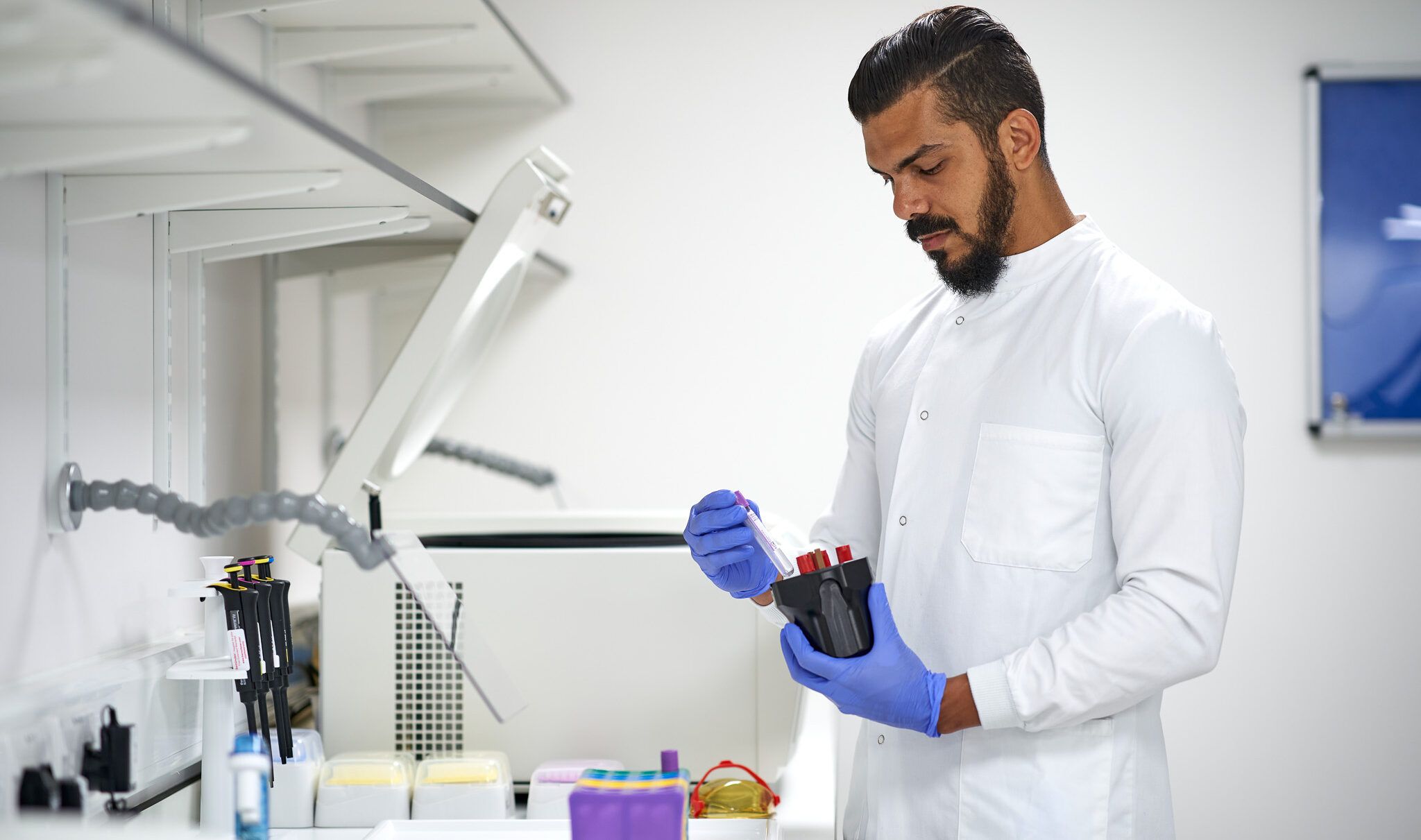
Researchers at the Royal Orthopaedic Hospital and Aston University explore novel bone cancer therapy
Lucas Souza, Research Laboratory Manager for the Dubrowsky Regenerative Medicine Laboratory at the Royal Orthopaedic Hospital (pictured), is partnered with Professor Richard Martin, director of the Advanced Materials Research Centre at Aston University to explore a new way to treat bone cancer.
As bone cancer researchers, we are seeking to tackle the problem of bone tumours across all fronts. We are currently exploring how the metal element gallium could be used to support the treatment of bone tumours due to its cancer-killing properties.
Bone tumours can be either primary (originated in the bone tissue) or secondary (originated in another tissue and metastasise to bone tissue). We have already proved in a previous study that primary bone cancer cells are four times more sensitive to gallium than normal cells. In that study we wanted to understand if doping bioactive glasses, used in orthopaedic and dental surgeries for its bone forming properties, with gallium would support positive outcomes for bone cancer patients. We were able to show that the use of gallium embedded in bioactive glasses is an excellent strategy to support bone repair whilst selectively killing bone cancer cells which can potentially culminate with better treatment outcomes and reduced cancer recurrence rates.
The next phase of this study is exploring the use of gallium against bone metastases – cancer that originated in another tissue before spreading to bone. The ultimate goal is to prove whether cells from bone metastases also have greater sensitivity to gallium so it could be used as an adjuvant medicine to control metastatic growth in the treatment of other types of cancer that usually metastasise to bone, such as breast, lung, and prostate cancer.
If successful, we will combine the gallium-doped bioactive glass powder with biodegradable polymers to make a minimally invasive injective gel that surgeons can use to treat both primary and secondary bone tumours. This gel will have the potential to reduce cancer recurrence and implant failure rates, leading to reduced time in hospital beds, reduced use of antibiotics, fewer revision surgeries, and increased survival rates.
It is also hoped that this innovation could be used to improve outcomes for patients with vertebral metastases and other types of primary bone tumours where surgery and radiation is less effective due to their proximity to the spinal cord.
The safety and effectiveness of these biomaterials will need to be tested further, but the initial results are really promising. Treatments for a bone cancer diagnosis remain very limited and there’s still much we don’t understand. Research like this is vital to support in the development of new drugs and new methodologies for treatment options.